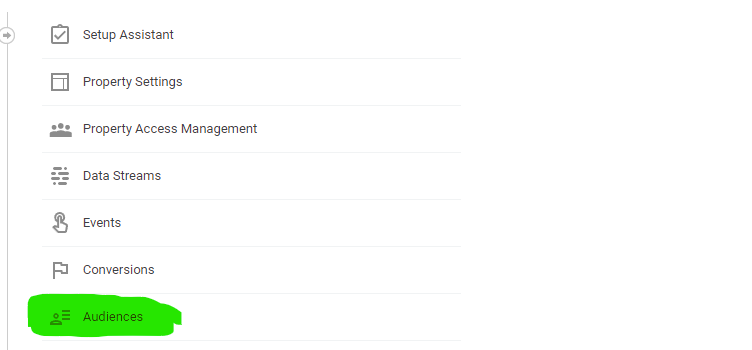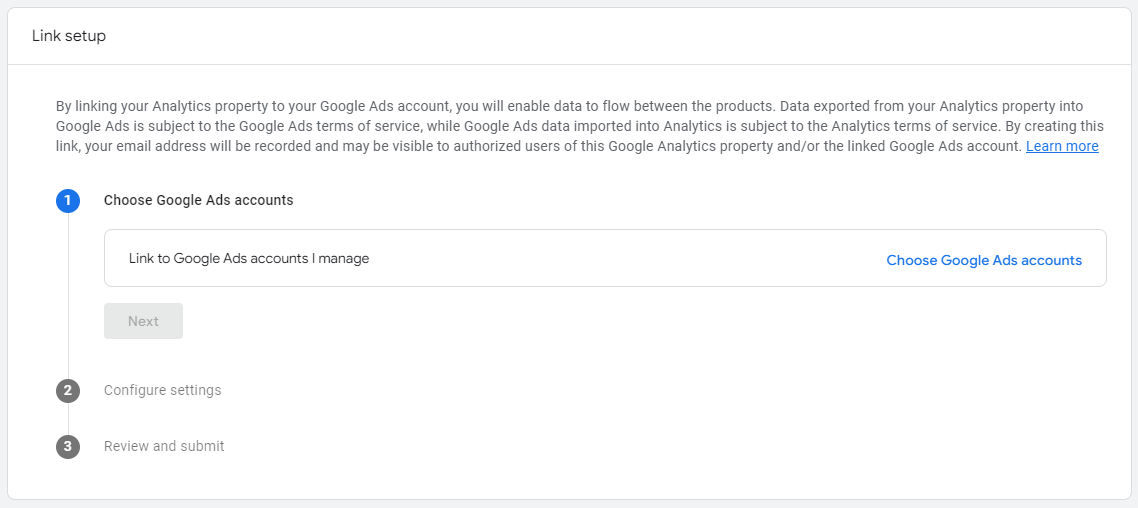
In GA4, audiences are groups of users that share specific characteristics or behaviors on your website. These audiences can be defined based on various criteria, and they serve multiple purposes, such as targeting, analysis, and remarketing.
How to setup an Audience in GA4
Step 1. Access Audience Builder
Log in to your Google Analytics account and navigate to the GA4 property you want to work on. Once you're in the property, go to the left-hand menu, click on "Audience," and then select "Audiences." This will open the Audience Builder.

Step 2. Choose Audience Parameters
In the Audience Builder, click on the "Create" button to start building a new audience. You'll be presented with options to choose from different parameters such as "Event," "User Property," "Demographics," "Technology," and more. For example, if you want to create an audience of users who completed a specific event, choose "Event."
Step 3. Define the Event Parameters
After selecting the "Event" parameter, you'll need to specify the event conditions. For instance, if you want to create an audience of users who completed a purchase, you can set the conditions to match the "Event name" with "Purchase."
Step 4. Add Conditions (Optional)
Depending on your requirements, you can further refine your audience by adding additional conditions. For instance, if you want to create an audience of users who made a purchase and spent a specific amount, you can set conditions for both the "Event name" (e.g., "Purchase") and the "Event parameter" (e.g., "Value" greater than a certain amount).
Step 5. Preview the Audience Size
Before saving the audience, you can use the "Preview" feature to get an estimated number of users who fall into that segment. This will help you gauge the size of the audience and ensure it is neither too broad nor too narrow for your analysis and marketing purposes.
Step 6. Add More Parameters (Optional):
If you want to create a more complex audience, you can click on the "AND" or "OR" buttons to add more parameters and conditions. This allows you to create audiences with multiple criteria, providing a more specific segment of users.
Step 7. Save the Audience:
Once you are satisfied with the audience definition, click on the "Save" button. You'll be prompted to give the audience a name and a description for future reference. Save the audience to add it to your list of created audiences.
Step 8. View and Analyze Audience Data:
After saving the audience, you can access it from the "Audiences" section in GA4. Select the audience you created to view its data and associated reports. You can also use this audience to create custom reports, compare it with other segments, or set up remarketing campaigns.
How to use GA4 Audiences for B2B SaaS Marketing
So now we’ve built some useful audiences and we can put them to work in a few different ways. Here's how you can use audiences in GA4 to help with your B2B SaaS Digital Marketing efforts.
Note: Your audiences only become useful when they are large enough, usually that is over 1000 in size. You should also ensure your Google Analytics account is linked with your Google Ads account to enable you to be able to use the audiences within Google Ads (when they are big enough).

1. Audience Targeting
Once you have created audiences, you can use them to create more targeted advertising and marketing campaigns. By using GA4's audience targeting features, you can direct your efforts towards specific user segments that are more likely to convert or engage with your content. I
2. Behavioral Analysis
Audiences are essential for behavioral analysis. By studying the behaviors and characteristics of different audience segments, you can gain valuable insights into how different groups of users interact with your website or app.
4. Remarketing and Retargeting
One of the significant benefits of audiences in GA4 is the ability to set up remarketing or retargeting campaigns. You can create audiences based on specific actions users take on your site (e.g., viewing a pricing page but not signing up for a trial) and then target these audiences with relevant ads to encourage them to come back and convert. (If your Google Ads account is linked)
5. Personalization
With audience data, you can deliver personalized content and experiences to specific user segments. Personalization can improve user engagement and overall user satisfaction.
6. Comparison and Segmentation
By comparing different audience segments, you can identify high-value groups or detect potential problem areas on your website or app. Segmentation allows you to analyze specific groups of users separately, providing deeper insights into their behaviors.
Using audiences effectively in GA4 requires careful consideration of your goals and the data you have available. Make sure to comply with privacy and data protection regulations and always ensure that you are transparent about the data you collect and how you use it. Additionally, periodically review and update your audiences as your business and user behavior evolve over time.
Find a B2B SaaS Expert
We've collected a directory of B2B SaaS experts and agencies that we've reviewed and categorised based on service and specialism for your review.








